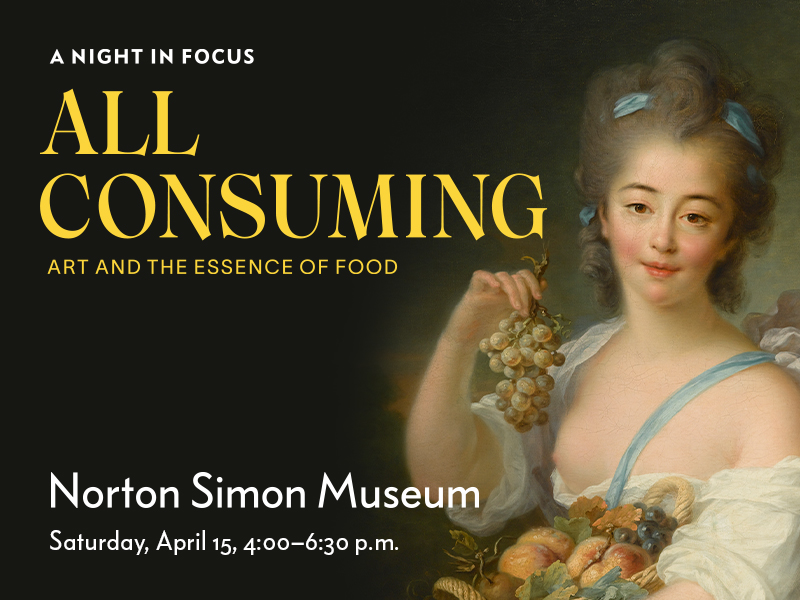Art and the Essence of Food

- DATE:
- TIME:
- 4:00 pm – 6:30 pm
Join us for a feast for the eyes and senses as we celebrate the opening of the exhibition All Consuming: Art and the Essence of Food. Explore the representation of food and drink in artworks featured in the exhibition and in the permanent collection galleries. Throughout the evening, enjoy live music in the galleries, a still-life drawing demonstration by artist Melissa Manfull and art-making activities for visitors of all ages.
EVENT DETAILS
- Fee:
- Free with museum admission. Recommended for visitors of all ages.
- Details:
- No reservations needed.
- Location:
- Meets in Entrance Gallery
